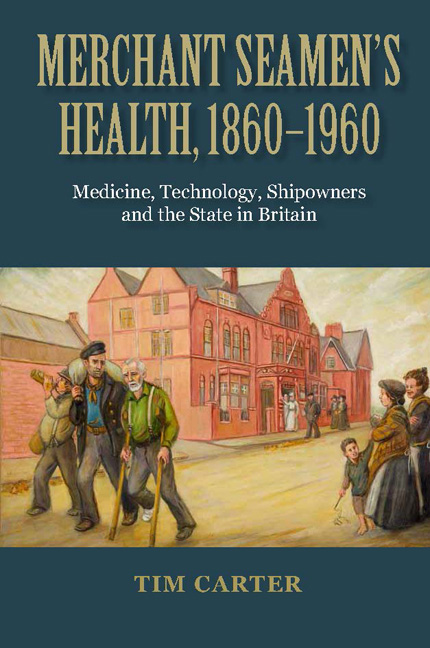Book contents
- Frontmatter
- Dedication
- Contents
- List of Illustrations
- Preface
- Acknowledgements
- List of Abbreviations
- Glossary of nautical terms used
- Introduction
- 1 Health at sea before 1860
- 2 Unseaworthy seamen
- 3 The health of merchant seamen in the nineteenth century
- 4 Injury and disease at sea in the nineteenth century
- 5 The seaman ashore: victim, threat or patient?
- 6 Bad food and donkey's breakfasts
- 7 Fit for lookout duties
- 8 The long-term health of seamen
- 9 War, manpower and fitness for service
- 10 Seamen's health in the welfare state
- 11 Retrospect and prospect
- Bibliography
- Index
4 - Injury and disease at sea in the nineteenth century
Published online by Cambridge University Press: 05 November 2014
- Frontmatter
- Dedication
- Contents
- List of Illustrations
- Preface
- Acknowledgements
- List of Abbreviations
- Glossary of nautical terms used
- Introduction
- 1 Health at sea before 1860
- 2 Unseaworthy seamen
- 3 The health of merchant seamen in the nineteenth century
- 4 Injury and disease at sea in the nineteenth century
- 5 The seaman ashore: victim, threat or patient?
- 6 Bad food and donkey's breakfasts
- 7 Fit for lookout duties
- 8 The long-term health of seamen
- 9 War, manpower and fitness for service
- 10 Seamen's health in the welfare state
- 11 Retrospect and prospect
- Bibliography
- Index
Summary
Captains and doctors
A ship's captain confronted with serious illness or injury at sea had no recourse to any form of help or medical advice, but had to act on his own initiative and experience. He had to decide on diagnosis and on any treatment at a time when he had few diagnostic aids or effective medicines. He then had to see through the course of an illness or of recovery from an injury until the ship reached port, sometimes a matter of months for a sailing ship. If there were several incapacitated seamen this could affect the operation of the ship. If a condition was contagious there would be concern about other crewmembers developing the condition, or about quarantine on arrival in port. In extremis he had to read the committal service and bury the body at sea. The captain and sometimes the mates were very much alone with their responsibilities.
Only a few of the larger ships, those with more than one hundred ‘souls’ on board, carried a surgeon. Often the prime role of the surgeon was the care of passengers, and it was for this reason that surgeons were a requirement for immigrant ships; as they had been for slave, convict and troop ships from an earlier date.
- Type
- Chapter
- Information
- Merchant Seamen's Health, 1860–1960Medicine, Technology, Shipowners and the State in Britain, pp. 51 - 67Publisher: Boydell & BrewerPrint publication year: 2014



